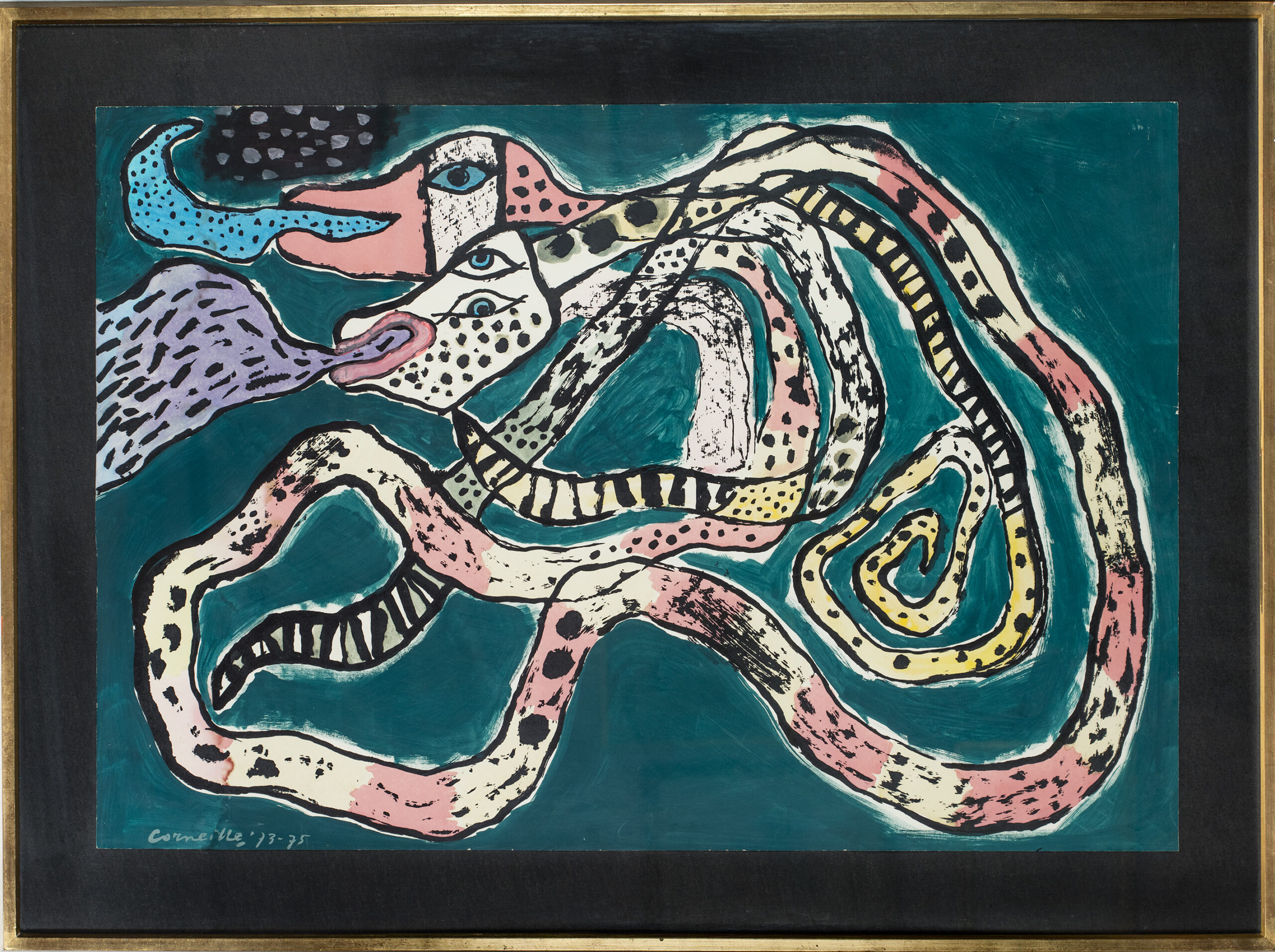Guillaume Cornelis van Beverloo, better known as Corneille, was born on July 4, 1922, in Liège, Belgium. In 1929, his family moved to Amsterdam, where he spent his childhood. At the Amsterdam Academy of Fine Arts, between 1940 and 1943, he began to nurture his passion for art while encountering an academic education that he found restrictive. Desiring creative freedom, he began exhibiting his works in 1946, with his first solo exhibition taking place in Groningen.
Corneille formed a friendship with the painter Karel Appel, with whom he founded the Dutch Experimental Group in 1948, which gave rise to the magazine “Reflex”. That same year, he became one of the co-founders of the CoBrA movement (Copenhagen, Brussels, Amsterdam), a collective of artists and poets who rejected traditional artistic conventions in favor of a more instinctive and free expression. The CoBrA movement is distinguished by its surrealist approach, its rejection of formalism, and its exploration of mythologies and cultural imaginaries from around the world.
Through his work, Corneille addresses recurring themes such as femininity, nature, and mythology. His paintings, often characterized by bright colors and naive forms, evoke a universe populated by voluptuous women, cats, birds, and solar symbols, while also incorporating African and Egyptian influences.
In 1949, Corneille made his first trip to North Africa. He discovered Arab and Berber cultures, and this immersion nourished his imagination. He participated in numerous exhibitions, notably in Paris, where he exhibited at the Colette Allendy Gallery, further solidifying his reputation on the international art scene.
After the dissolution of the CoBrA movement in 1951, Corneille went through a period of abstraction before returning to figuration in the early 1960s, inspired by his travels in Africa and South America. His works from this period are filled with evocative symbols, such as the sun, the serpent, and the bird, representing elements of the masculine and feminine duality.
The artist also excelled in other artistic disciplines, such as printmaking, ceramics, and sculpture. His passion for art remained intact, and he continued to create until his final years.
Corneille passed away on September 5, 2010, in Auvers-sur-Oise, France. In accordance with his wishes, he was buried alongside Vincent van Gogh, another master of painting.
